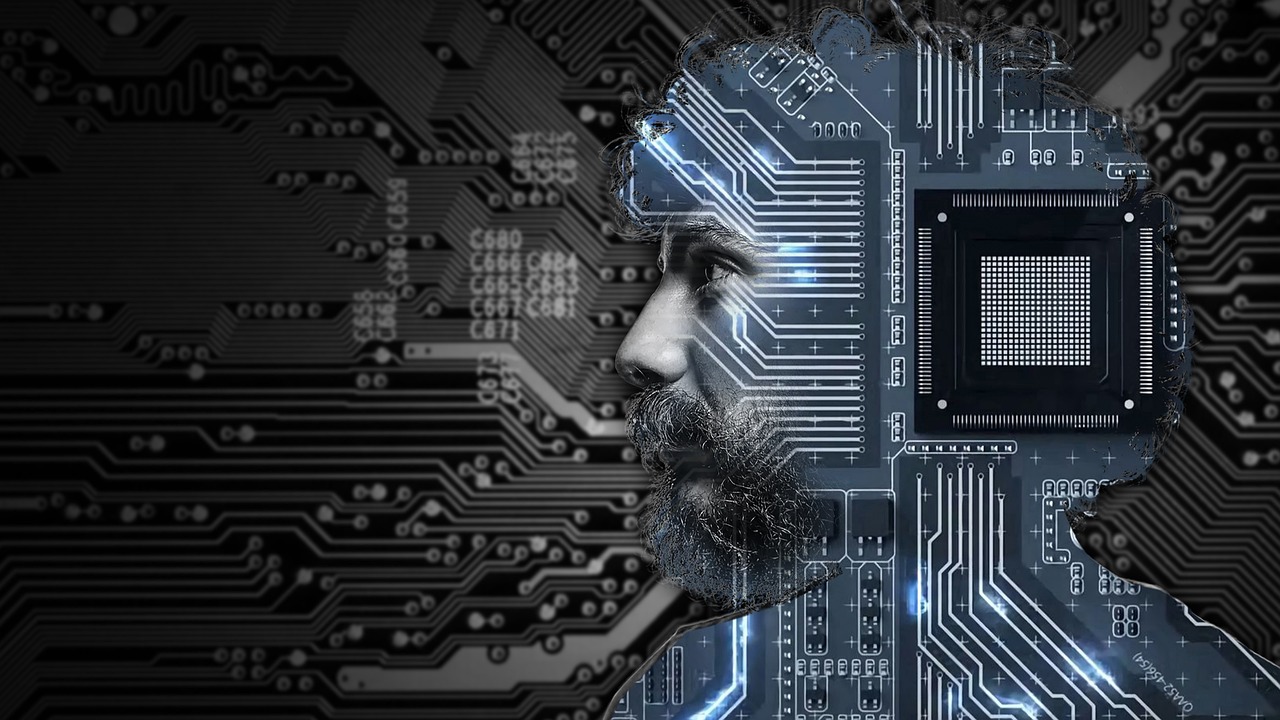As of writing, I’m flying home from a Chinese city named Harbin. The journey’s a little over three hours, but it wouldn’t have been possible a few hundred years ago. It’s -30oC in Harbin today, so I’d have probably turned to gelato en route.
Instead of meeting a chilly end, here I sit, miles in the air, sweltering in the thermal underwear I wish I’d remembered to remove at the airport. It’s a clammy reminder of how fast technology moves on and how drastically things can change in the process.
There have been many technical revolutions in poker, but what impact have they had on the game? Let’s take a look.
Introducing Hole Card Cams
One of the most controversial poker innovations was the introduction of hole-card cameras. Hole cams are tiny, concealed cameras that reveal players’ cards when playing on TV. Audiences see the players’ cards, allowing them to enjoy a more immersive experience.
RFID technology (an electronic-card reader built within the table) has replaced hole cams. But their initial introduction received was ground-breaking.

Invented by Henry Orenstein in 1995, hole cams received a mixed welcome. The prospect of playing on TV likely excited a lot of amateurs. But many pros were worried about the potential repercussions of showing people how they played their hands.
Hellmuth talks about this in episode 11 of the Against All Odds with Cousin Sal podcast, which you can find on YouTube.
In the interview, Hellmuth described the introduction of hole cams as ‘like turning a light switch on to for the world,’ and some pros were (understandably) concerned. The sceptics weren’t only worried about other regs picking up live reads.
At the time, there was limited access to poker coaching. So, without the modern plethora of online content, people had to learn through instinct and trial and error.
The introduction of hole card cams offered a new source of education, which was sure to make the tables tougher and eat into the pros’ profits.
Hole Card Cams Concerns and Objections
There were moral objections too. Losing is a rite of passage for new players. The Truman Show, like poker, risked exposing secrets that pros had spent a lot of time and money learning the hard way.
Why should they be forced to broadcast them for free?
These concerns weren’t new. Over the last few decades, there have been many arguments about the risks of offering coaching content. Some believe the financial impact of educating players (and making the games tougher as a consequence) outweighs the quick buck in endorsements or sales.
Take Doyle’s Super System, for example. According to its Wikipedia page, Doyle believes it ‘probably cost him more money [at the tables] than he was paid for writing it.’

To make matters worse, hole-card cams took things a step further by making learning from the pros more enjoyable than ever. Studying was no longer a burden.
Instead of wading through boring books in the poker lab, players could relax and learn from TV shows intentionally edited to be as entertaining and exciting as possible.
Hole cams changed the face of televised poker forever. They made it more exciting and suspenseful. Like watching a horror movie, you could now guess what would happen, but watched to see how it played out anyway.
Instead of seeing thousands of dollars pushed across a table, you got a step-by-step guide. Poker seemed easy. The fascinating blend of simple, sexy and cool raised poker’s profile and attracted new players.
The Moneymaker story is an excellent example of hole cam’s impact on poker. They began using the technology at the 2002 WSOP Main Event, just a year before Chris Moneymaker took it down and kick-started the 2003 poker boom.
It’s hard to imagine his triumph having had the same impact without the exposure and entertainment value that hole card cams offered.
The Internet Affect
The internet was another considerable driving force in the development of poker because the advent of online games made the tables far more accessible. Instead of driving to a casino and sitting on a waiting list, players could join a game whenever they had a spare ten minutes.
- The games were much faster too.
- There were no chips to count or cards to shuffle.
- The timers made painfully long, Vogelsang-style tanking impossible.
- They didn’t even have to waste time getting dressed.
- They could roll out of bed and be scooping pots before the toilet cistern had finished refilling after their obligatory morning wee.

The new speed of poker amplified the ability to multi-table. As a result, the number of hands someone could play in an hour online dwarfed that of the live arena. This factor changed the entire poker landscape.
People could now play more hands in a year than a live professional might in their entire careers.
While experience is just one component of competence, it’s probably the most crucial learning independently. This reasoning is what happened in the poker world:
Suddenly players could gain a wealth of experience very quickly. It was also recorded, enabling enthusiastic players to review their games like never before.
Gone were biased or disjointed recollections of hands - hours, days or weeks after they had been played. Anyone could copy, share and study a perfectly formatted hand history - all in black and white.
The whole learning process accelerated, and people improved rapidly. This snowball effect increased the overall standard of poker, which made the games increasingly difficult to beat.
As a result, poker is way more challenging now than thirty years ago, and it would be foolish to deny the internet’s role.
Many argue that today’s online recreational players are better than many old-school live pros ever were. What do you think?
Training Sites and Forums
The demand for platforms allowing people to discuss hands and improve increased as poker became more complex. Online poker forums such as those at twoplustwo.com became very popular.
These forums enabled people to talk about strategies and techniques. Players began to learn from each other.
Likewise, as internet browsers became more complex, subscription-based coaching sites, such as DeucesCracked and Cardrunners, began to emerge. These sites included their own forums and podcasts. But their main attraction was an archive of poker videos that allowed subscribers to watch high-level professionals discussing poker hands via voice-over.
On DeucesCracked, an MTT series called Tournamentality had Vanessa Selbst as one of the leading coaches. It’s fair to say that training sites accelerated the strategic growth of poker, and they are still prevalent today.
Who knows where today’s games would be without them?
The Breakthrough of GTO Solvers
GTO poker ‘solvers’ are one of the newer developments in poker. Their introduction has enabled a transition towards GTO poker, which has made the game more sophisticated.
GTO, or game theory optimal, is a perfectly balanced and unbeatable strategy. We don’t have enough space to discuss GTO here. But it’s essential to understand that a GTO strategy is challenging to devise yourself.
Poker is a very intricate game. In a heads-up, no-limit format, for example, there are more theoretical scenarios than atoms in the universe.
As a result, GTO poker strategies are incredibly complex and way beyond the abilities of a human brain. Now, programs can develop these strategies thanks to modern computer power.
Once calculated, humans can study the results and apply them themselves. It’s unlikely that a human will ever play a perfect GTO game legitimately. They can improve their play vastly by implementing GTO strategies.
GTO solvers are another quite intimidating example of how technology is raising the standard of poker.
HUDs in the Poker Arena
The pursuit of GTO strategies is a big focus in today’s highest-level games. But for a long time, most poker players focused on exploitative play (and many, such as Charlie Carrel, still do).
The GTO vs exploitative play is a debate for another day. But it would be hard to argue that proper use of HUDs made it far easier to exploit your opponents.
A poker HUD (or heads-up display) is tracking software that monitors your opponents' decisions in real-time. It collects and builds a database of information about each player.
The data is customisable and accessible in-game, allowing you to make strategic decisions based on your opponent's tendencies.
Modern HUDs monitor almost everything your opponents do. While they don’t tell you how to play, using a HUD properly is like playing with a perfect, unbiased memory.
HUDs are great off the table too. Since they record everything, they offer a great way to review sessions. This factor makes it easy to work on your game and look for ways to beat your opposition when not at the tables.
One of the great things about HUDs is that they let you keep track of a lot of tables simultaneously. It enables poker players to multi-table more effectively, increasing the total number of hands they can play.
Before the crackdown on HUDs, poker screens looked like something straight from the matrix. People would play an obscene number of tables at once, filling every pixel of multiple screens with a poker table. They would overlay garish boxes with purple and green statistics. It was migraine-inducing.
Many recreational players criticise the use of HUDs, believing that they give pros an unfair advantage. While this is partly true, HUDs are available to everyone. The benefits of using a HUD come from knowing how to use and interpret the data.
This application requires a lot of skill and strategic understanding. Using a HUD incorrectly can be worse than not using one at all.
Nonetheless, many poker clients no longer save text hand history files on your computer, meaning HUDs don't work.
Most poker sites have banned the use of all third-party programs to reduce the risks of cheating and bot use. But some offer a basic HUD within their own software.
In any case, the increasing toughness of the games means that lots of people tend to play fewer tables.
The Rise and Sophistication of BOTs
Technological advances have been very positive for poker overall. But the rapid improvement in computer power means that poker bots are becoming increasingly more advanced and formidable. This progress poses a serious threat.

Bots used to exist in two main formats:
- The first was a low-quality bot that was predictable and easy to beat. This bot had to be programmed by the operator and often employed simple inelastic strategies. While they could often beat very weak players, these bots were vulnerable to exploitation. They could be crushed easily if someone discovered a hole in their strategy.
- The second bot was far more advanced. These bots were the likes of Libratus and Polaris. These super bots were very sophisticated. But they required processing power that only existed in multi-million dollar supercomputers.
Since few of us have these kicking around, bots haven’t been much of a concern for the average poker player in the past. But technology is moving forward very quickly. So, it may not be long before a comprehensive bot can exist on a decent home computer (that’s if it isn’t already!).
- Say technology made it to where a poker bot could work with a GTO solve.
- Say the bot could mimic a random and believable amount of ‘human’ error.
Then BOTs would pose a real risk to the poker world.
With that said, poker sites are doing everything they can to protect players online from bot use. Since the randomness of human behaviour is hard to replicate, we’re not quite there yet.
If you’d like to learn more about Libratus and other poker bots, check out this article dedicated to them HERE in this magazine.
So, there we have it. Bots, HUDs and hole cams. What do you think will come next?


